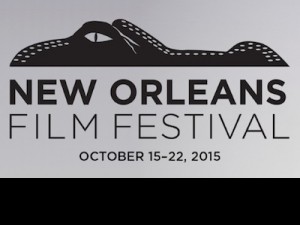JazzLoft_2.jpg
![From 'The Jazz Loft' [Image courtesy neworleansfilmfestival.org]](https://wwoz.org/sites/default/files/styles/default_more_1x/public/all/images/wwoz-blogs/more/JazzLoft_2.jpg?itok=vgn9Mkx-)
MaryLouWilliams_1.jpg
![From ‘Mary Lou Williams' [Image courtesy neworleansfilmfestival.org]](https://wwoz.org/sites/default/files/styles/default_more_1x/public/all/images/wwoz-blogs/more/MaryLouWilliams_1.jpg?itok=mO2qpNVR)
KingofNewOrleans_1.jpg
![From ’The King of New Orleans' [Image courtesy neworleansfilmfestival.org]](https://wwoz.org/sites/default/files/styles/default_more_1x/public/all/images/wwoz-blogs/more/KingofNewOrleans_1.jpg?itok=-QhO4YwZ)
The New Orleans Film Fest is back and bigger than ever. Its 26th incarnation will run from Wednesday, October 14 to Thursday, October 22. The festival will again feature many films by local filmmakers and films that are especially of local interest, as well as many with music as their focus.
Ethan Hawke's "Born to Be Blue" kicks off the festival on Wednesday. In this film, Hawke portrays legendary jazz trumpeter Chet Baker and his struggle to stage a comeback while overcoming addiction.
Music Films
"Buckwheat's World"
Buckwheat's World presents a unique view inside southwest Louisiana's culture through the music, life and times of its star, Stanley "Buckwheat" Dural, Jr. and his band. Buck, a Grammy winner who grew up picking cotton, is showcased in new live performances and entertaining and intimate interviews that tell the story of this unforgettable character. Produced by two Peabody Award-winning Louisiana documentary veterans, this film presents a wide-angle look at an old-school Louisiana legend, while preserving Buckwheat's cultural legacy for future generations.
"Cover Me"
Conceived as a marriage of film and performance art, Cover Me presents a playful, shape-shifting mixtape of vignettes chronicling musician Meka's (co-writer Tameka Norris) return to New Orleans. As she copes with isolation, uncertainty and the ever-open gaze of strangers, Meka phases through identities like a Bywater Cindy Sherman from soulful sidewalk busker to world-weary twenty-something to earnest singer-songwriter to round-the-way girl. A portrait of the place and person merge, thanks to the power of personal metamorphosis in the city of "Do Whatcha Wanna." Refreshingly light in its execution and filled with prankish high spirits, Cover Me marks the return of Garrett Bradley, director of NOFF 2014 Special Jury Award winner, Below Dreams.-Jonathan Kieran
"In My Father's House"
Che “Rhymefest” Smith seems to be on top of the world: he’s a Grammy-winning musician who frequently works with his close friend Kanye West. Still, he feels emotionally unsatisfied due to the absence of his father, who abandoned the family during Che’s childhood. After checking with several old acquaintances, he finally tracks down his dad, Brian, who is homeless and struggling with alcoholism. Now the son must become a mentor for the father, as Che guides Brian through sobriety and job hunting. Meanwhile, we gain insight into each man’s personal life and the challenges they face to achieve their goals. While Brian struggles to avoid a relapse after an initial period of success, Che reflects on his relationship with his own children, his status as a role model in the African-American community and the nature of fatherhood as a whole. –Jack Hamm
"Jaco"
Jaco tells the story of Jaco Pastorius, a self-taught, larger-than-life musician who single-handedly changed the course of modern music by redefining the sound and the role of the electric bass guitar. Never-before-seen 8mm film, photographs and audio recordings unveil the true story behind the legend of Jaco's life, his music and his heartbreaking end. Featuring artists including Bootsy Collins, Flea and Joni Mitchell, Jaco leaves us longing for a time when musicians owned the music industry. The film is produced by Metallica's Robert Trujillo with Passion Pictures (responsible for the Oscar-winning Searching for Sugar Man.
"The Jazz Loft"
From 1957 to 1965, some of New York’s greatest jazz musicians, including Thelonious Monk, Hall Overton and Zoot Sims, gathered in a tiny set of rooms on Sixth Avenue to play their hearts out. One of their hosts was W. Eugene Smith, an ex–LIFE magazine photographer with an obsessive desire to capture the world around him in pictures and tape recordings. Drawing on the thousands of tapes and photos that Smith produced, as well as a set of interviews with a diverse cast of music veterans, this film offers an unprecedented look at the creative process of its subjects. Meanwhile, Smith’s own history—including a stint as a WWII battlefield photographer, the acceptance and rejection of mainstream success in the early 1950s and an eventual move away from a conventional lifestyle—lends the story a wider context, exemplifying the peaks and valleys of mid-century American society. –Jack Hamm
"Mary Lou Williams: The Lady Who Swings The Band"
"There aren’t any women, and very few men, that can do what I can musically,” Mary Lou Williams says toward the beginning of this portrait, demonstrating the well-deserved confidence that pushed her forward as an arranger and pianist in the man’s world of jazz. Williams made her mark with imaginative arrangements for Duke Ellington and Benny Goodman, as mentor to young musicians like Dizzy Gillespie and Thelonius Monk and during solo performances. Her words drive the story: Alfre Woodard narrates excerpts from her interviews and letters and provides an intimate look at the mind of a woman who revolutionized jazz, yet remains known only as a “musician’s musician.” Archival footage and recordings, interviews with prominent jazz scholars and recreations of Williams’s path from Kansas City to the center of the jazz scene make this an unusual and inspiring film. –Rachel Lazar
New Orleans/Louisiana Films
"Barge"
In Barge, we join the crew of a small towboat on their month-long journey to New Orleans, as they haul cargo away from the port town of Rosedale, Mississippi. One of the film's many interviewees is an ex-convict who's been given a second chance in life; another is a recent recruit hoping to prove himself in the eyes of the captain; a third is a 21-year veteran of the river who muses on the possibility of retirement. Despite their diverse backgrounds, the crewmembers are united by camaraderie and pride in their work: a few of them even describe the boat as their home and dry land as a less familiar locale. Blending candid interviews, up-close depictions of the boat's workings and languid, evocative shots of the river's scenery, Barge meditates on the relationship between commerce, nature and the human spirit. -Jack Hamm
"Consequence"
On a wilderness camping trip, three college students fatally injure an apparent intruder who turns out to be one of their classmates. Panicking, they dispose of the body and try to cover up all traces of the incident, but the disappearance of their fellow scholar does not go unnoticed. To the horror of her co-conspirators, one of the trio deals with her own guilt by taking a leading role in the search for the missing man's whereabouts. The three girls must confront their own inner feelings, as they uneasily coexist with the investigation of their own crime, as well as the rapid decay of their friendship and a new set of discoveries about the young man whose life they have ended. Exploring guilt and innocence, companionship and isolation, Consequence represents a compelling examination of human responses to tragedy. -Jack Hamm
"Delta Justice: The Islenos Trappers War"
Leander Perez, one of Louisiana’s top political bosses of the mid-1900s, is best remembered as a die-hard opponent of desegregation during the Civil Rights Movement. This film shows us that his early years were also filled with prejudice and double-dealing. As a young district attorney in the 1920s, he sought to cheat the Isleños people (the descendants of Louisiana’s original Spanish settlers) out of valuable trapping lands. After a courtroom battle proved ineffective, the situation exploded into violence, as the trappers waged war against Perez’s goons. Mixing statements from historians, interviews with the descendants of the principal players and dramatic recreations of key events, this film sheds new light on an often-forgotten episode of the state’s rich history. Although these events occurred nearly a century ago, the theme—the conflict between rich and poor—remains familiar today. –Jack Hamm
"Dog Man"
Dick Russell was a Louisiana legend whose influence spread far outside his home state. An expert trainer who spent five decades working with dogs (and also found the time to train at least one cheetah!), he helped develop methods—allowing dogs to play together in a natural environment and focusing on positive reinforcement rather than punishment—which have since become standard in the training industry. This documentary examines Russell’s life from a variety of angles. The people he influenced, including fellow trainers and grateful dog owners, discuss his effect on their lives. We also view footage of the training sessions he conducted, as well as a depiction of his final battle with cancer, which physically weakened him but diminished none of his enthusiasm for his work. The result is a film that will provide inspiration to dog lovers the world over. –Jack Hamm
"Floating on Fire"
This film explores the memorial created by New Orleans artist Jana Napoli created in 2005 after Hurricane Katrina. She collected hundreds of discarded drawers from destroyed homes, acutely aware that each drawer belonged to a real person and stored their personal effects: bottles, clothes, photographs, pills and receipts—the stuff that makes up a life. She enlisted the help of three firefighters to build “Floodwall” along the banks of the Mississippi river, an installation of 700 drawers in the shape of a giant pyramid. And then, in an act of artistic and personal expression, she decided to burn the exhibit. "The city is not silent anymore, so it's time to say goodbye to what was sad and painful,” she said.
"The King of New Orleans"
Larry Shirt is a New Orleans taxi driver whose passengers include the city's tourists, socialites and musicians. Bobby Cohn, a Harvard student home from school and experiencing a personal crisis, is one of those passengers. The circumstances that bring them together lead to a bond ultimately turned upside down by Hurricane Katrina, but instilled by the love of the city they both call home.
"Missing People"
"My name is Roy Ferdinand, and in these following pages, I will try to give you an idea as to what my life has been like. I will tell you, whoever should read this, I'm so incredibly saddened by the current turn of events. When I was maybe 15 years old or so younger, I had a great many ambitions and dreams. How I came to lose many of them is my own fault." Toward the beginning of Missing People, Martina Batan, an art collector, reads this passage aloud as her voice trembles. She collects the New Orleans outsider artist's possessions, and these notes, (intended by Ferdinand to be published in an autobiography) were tucked in a sketchpad. Batan's fascination with the dark beauty in Roy's work, as well as her struggle to come to terms with her brother's violent death, drive this film about artistic creation and connection, obsession and living with ghosts. -Rachel Lazar
"The Mourning Hills"
Do you remember the first time you saw a dead body? Like everyone in their town, Kate and Maddie have heard the stories about the Hills, miles and miles of untracked forest where, they say, lie the untold remains of people who journeyed there to end their lives. After years ricocheting through foster homes, the two orphan sisters decide to break out on their own, with their path to freedom cutting straight through the heart of the Hills. Soon, they encounter a presence much more menacing than the bodies littering their path, in the form of two brothers on the run from a shared crime. To make their escape, the girls must hold tight to one another as they come to know the death that walks the Hills. Led by its haunting score and its heroines' wrenching loss of innocence, The Mourning Hills offers a commanding view of nature's awful beauty. -Jonathan Kieran
"New Orleans, Here & Now"
In New Orleans, Here & Now, six different filmmakers tell six stories about the city today, ten years after Katrina. The settings range far and wide--including Celebration Hall in the 7th Ward, Algiers Point on the Westbank, a high school in the Bywater, the furthest reaches of St. Bernard Parish, even Astrodome in Houston--focusing on the people, experiences and perspectives that are inseparable from the city.
"The Phantasmagorical Clarence John Laughlin"
In 1977, documentarian Gene Fredericks brought his equipment into the home of Clarence John Laughlin, surrealist photographer and eccentric genius. Despite his considerable artistic reputation, Laughlin described himself as “first and foremost a book collector”; thus, Fredericks’ plan was to explore some of the innumerable volumes crammed into the man’s small apartment. But the situation took a very different turn as the irascible artist inserted himself into the proceedings, offering up opinions on a variety of subjects, while freely insulting the people behind the camera. In addition to this footage, Fredericks provides interviews with a variety of experts on Laughlin’s bizarre personality and checkered career, as well as a chronicle of his own efforts to complete the documentary (including the story of a backer who offered him a considerable sum not to complete the film!). –Jack Hamm
"She's The Best Thing In It"
The character actor is tasked with the seemingly impossible: become the person she portrays. Is this a talent that can be taught? And what happens when an accomplished character actor, expertly able to mold herself into others, appears before the camera as herself? Meet Mary Louise Wilson: at 79, the Tony Award-winning New Orleans native is considered the greatest living character actor. In She's The Best Thing In It, Oscar-nominated writer/producer Ron Nyswaner (Philadelphia) follows Wilson as she teaches her very first acting class. We learn from the master, along with wide-eyed theater kids, as Wilson challenges and inspires with her toughness, devotion to the craft and sense of humor. Wilson's stories about her complicated relationship with stardom and struggles as an aging actress fill out this portrait of a life in the theater. -Rachel Lazar
"Sisters of the Plague"
Director Jorge Torres-Torres (Shadow Zombie, NOFF 2013) returns with another brooding story of life on Louisiana's psychotropic fringe. By day, Jo regales French Quarter tourists with ghost stories. By night she arranges witchy performance pieces in abandoned houses. In between, she tries to bond with her recently-resurfaced father, who is desperately alcoholic and terminally ill, and maintain her tenuous relationship with her bartender girlfriend. Tormented by strange dreams and torn by questions surrounding her mother's drowning death, Jo seeks out the help of psychics and healers. But stirring up the submerged past only pushes her further into the grips of the beyond. Underneath its story of grief and dislocation, Sisters of the Plague pulsates with a heart of horror. -Jonathan Kieran
"Reversing the Mississippi"
On a road trip across America, filmmaker Ian Midgley met two young innovators whose projects, resourcefulness and idealism inspired him. You may have seen Marcin Jabukowski's TED talk: he's the physicist who started Open Source Ecology, an effort to democratize the production of tools for agriculture. And you may have read about Nat Turner, the New York City teacher who relocated to the Lower Ninth Ward soon after Hurricane Katrina: he started Our School at Blair Grocery, an urban agriculture experiment meant to empower neighborhood youth, but recently beset by financial difficulties. Midgley decides to play matchmaker, sensing a collaboration between the two men could be fruitful. The result is a revelatory (and often funny) behind-the-scenes look at individuals who hope to change the world, and the organizational and personal challenges inseparable from this ambition. –Rachel Lazar
"Yazoo Revisited: Integration and Segregation in a Deep Southern Town"
In 2010, politician Haley Barbour offered his opinion of Southern race relations during the ‘60s, claiming that “I just don’t remember it as being that bad,”—a quote that went over about as well as one would expect. The history of Yazoo City, Barbour’s own childhood home, provides a more nuanced look at the troubled legacy of the South. In 1970, Yazoo’s schools were integrated without much tension, leading the community to be hailed as a model of race relations. Still, the bigotry of the town’s past and the situation of its present (many white parents have sent their children to private schools, creating a state of near-segregation) tell a different story. Through the stories of students, teachers and community leaders, this film paints a picture of the Civil Rights Movement at its height, but also highlights the problems that must still be overcome. –Jack Hamm
Full film schedule and passes are available at http://www.neworleansfilmsociety.org/.




















